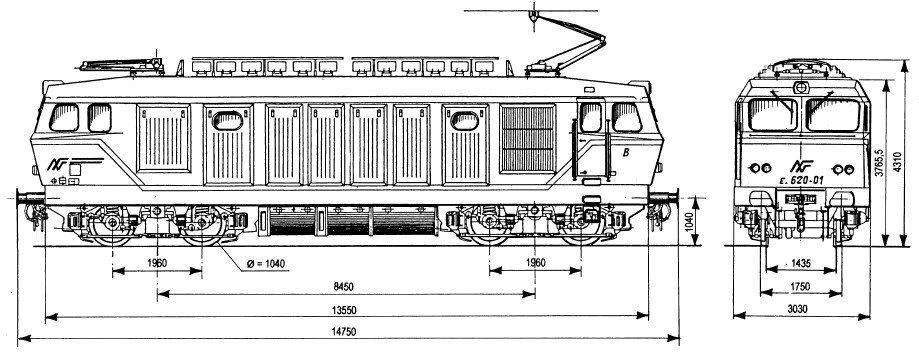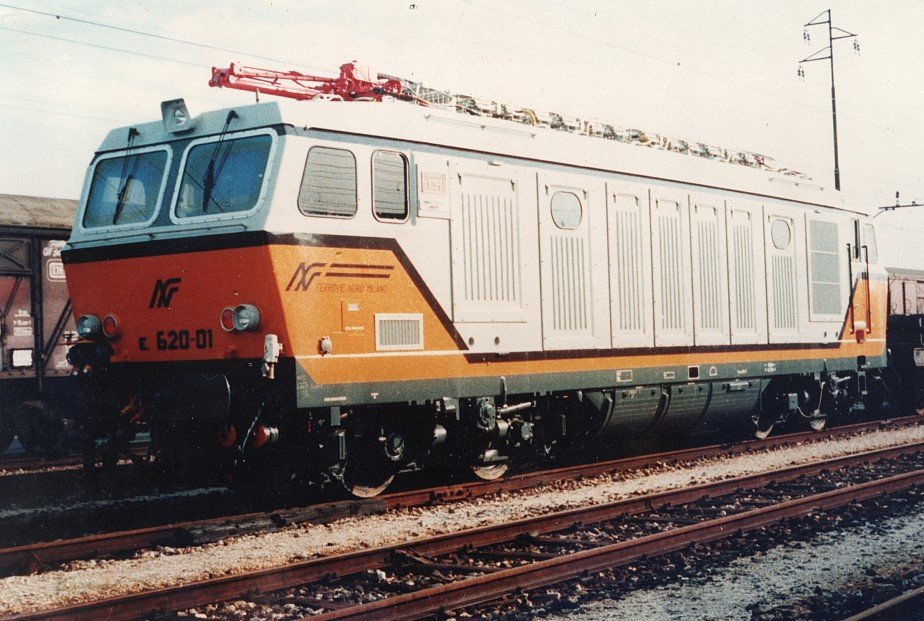As part of the plan for upgrading and modernising the fleet with funding from Law 497/75 and Regional Law 22/78, and at the same time as the order for the EB 750 electric railcars, FNM considered various solutions before selecting Ansaldo Trasporti for the supply of 6 Full-Chopper traction locomotives which were to be registered as class E 620. They were equipped with two single-motor bogies with anti-sway dampers and could travel with shuttle trains thanks to the remote command lines present on both the locomotives and on the SOCIMI and Casaralta cars being delivered. The maximum speed allowed was 130 km/h. It should be noted that at the time it was not possible to reach this speed on any section of the FNM network. Its power was more than double that of the previous E 600-610s. The body and driving cab directly referenced the type adopted in the 1970s-1980s for the more modern locomotives supplied to FS. The livery, as for all the stock acquired in those years, was orange/light grey with black bands, similar to that of the double-decker cars on the French railways.
E-620

- Progettazione: 1980
- Costruzione: 1984
- Esercizio: 1987 – 20XX
- Massa in servizio: t.72
- Rodiggio: Bo’ Bo’
- Ruote motrici Ø: 1.040 mm
- Costruttore: Ansaldo - CGE
- Lunghezza fuori tutto: 14.750 mm
- Larghezza: 3.030 mm
- Sforzo all’avviamento: 160 kN
- Potenza oraria Motori T 850: 2.640 kW
- Azionamento elettronico: Full-Chopper
- Altezza massima: 4.310 mm
- Interperno carrelli: 8.450 mm
- Passo carrelli: 1.960 mm
- Antipattinaggio: Sì
- Velocita massima: 130 Km/h
- Alimentazione: 3 kV CC
- Design date: 1980
- Build date: 1984
- Service date: 1987 – 20XX
- Service mass: 72 tons
- Wheel arrangement: Bo-Bo
- Diameter of the driving wheels: 1,040 mm
- Builder: Ansaldo - CGE
- Overall length: 14,750 mm
- Width: 3,030 mm
- Starting tractive effort: 160 kN
- 1-hour power T850 motors: 2,640 kW
- Electronic traction: Full-Chopper
- Maximum height: 4,310 mm
- Distance between bogie centres: 8,450 mm
- Bogie wheelbase: 1,960 mm
- Wheel slide protection: Yes
- Maximum speed: 130 Km/h
- Voltage: 3 kV CC
The interiors of the locomotives were principally divided into three sections. The two driving cabs had a large windscreen and a modern, functional console for controlling all the equipment and for driving. Access door on the right-hand side of every cab. A side corridor connected the two cabs. The central compartment to the side of this housed all the power electrical and electronic equipment and subsystems. The ventilators with their distinctive sound. The rheostats and single-arm pantographs were located on the roof. The batteries, compressors and inverters were contained in the underbody. The actual number of class 620 locomotives in service was only 5, as one was used as a source for parts. They circulated with shuttle trains consisting of double-decker or SOCIMI cars, or in hybrid compositions with both types of car and a control car at one end which permitted the shuttle service. From this class, the E 620-03 locomotive has been preserved for display purposes as an example of the first historic modernisation of the FNM.

